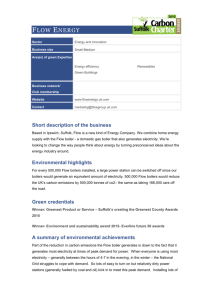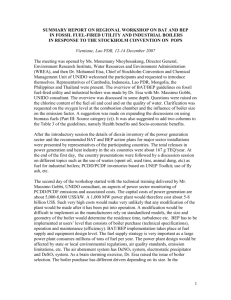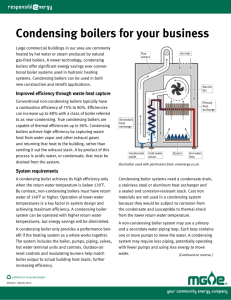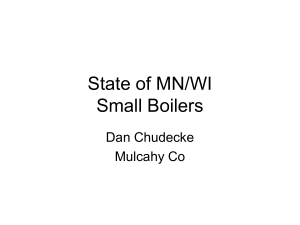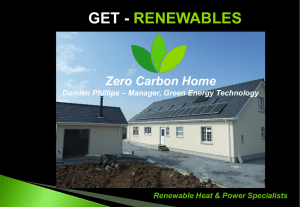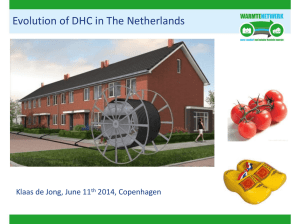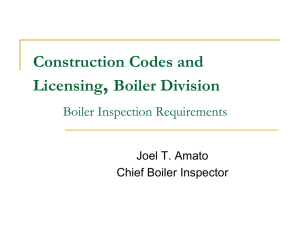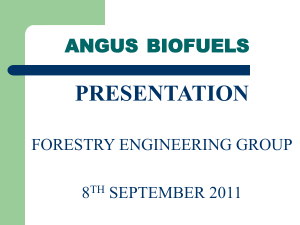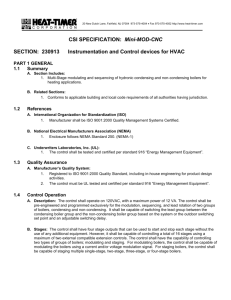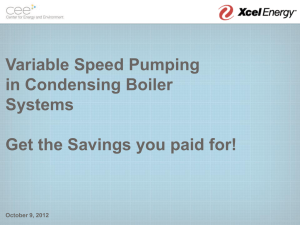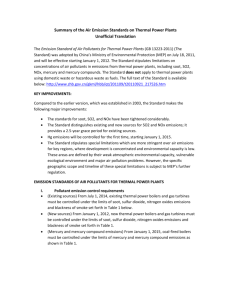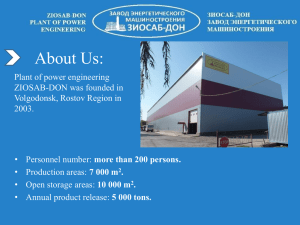Model CFC Full Condensing
advertisement
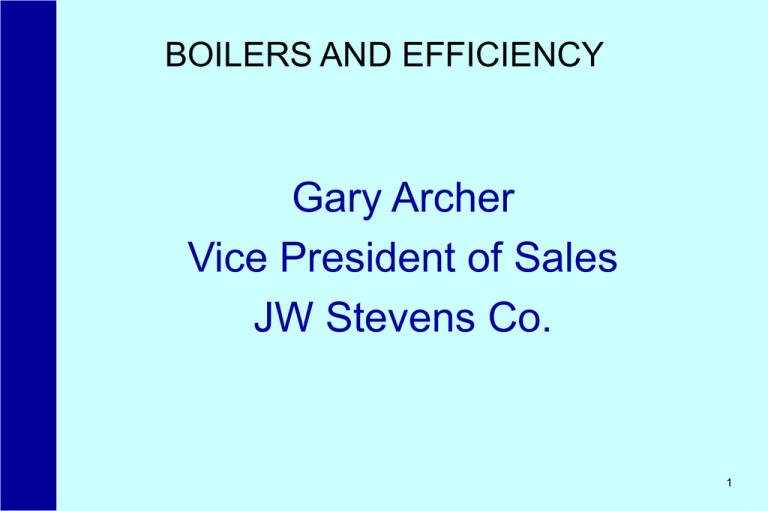
BOILERS AND EFFICIENCY Gary Archer Vice President of Sales JW Stevens Co. 1 BOILERS AND EFFICIENCY TYPES OF BOILERS – STEAM Water tube, Fire tube, Cast Iron Fuels – gas, oil, combination Typical Efficiencies – 78-84% 2 HOW DO YOU INCREASE EFFICIENCY ON STEAM BOILERS? Burner/controls upgrades as discussed earlier ECONOMIZERS!!!! 3 ECONOMIZERS 5 ECONOMIZERS Take flue gases from the boiler to pre-heat water that can be used for potable use if you have a large need for domestic hot water. (i.e. Hospital, Food Processing ) OR Use the hot water (260 degrees) to be used as boiler feed water. (Typical feed water temperatures are 160-225) Increases boiler efficiency by 3% or more and usually have less than an 18 months payback 6 BOILERS AND EFFICIENCY TYPES OF BOILERS - HOTWATER Water tube, Fire tube, Cast Iron Fuels – gas, oil, combination Typical Efficiencies – 78-84% MODULAR BOILERS!!!! 7 MODULAR BOILERS 8 MODULAR BOILERS Gas Only – Natural or Propane Small Footprint Low mass/light weight design Non-Condensing and Condensing 9 What is a Non Condensing -vs- a Condensing Boiler? 10 Non – Condensing Boilers These style boilers run in the 85-86% efficiency range regardless of return water temperatures. Vessel design must allow for continuous operation @ >130 F return water temperature. Heat transfer (fireside) surfaces do not consist of materials resistant to acidic condensate and corrosive elements. They are typically made of copper Less expensive than condensing boilers Typical Applications are Standard building heat and/or indirect DHW. 11 Condensing Boilers To achieve maximum efficiency a hydronic boiler must fully condense. This means the return water temperature back to the boiler must be below 130F. This allows for the flue gas temperature to drop below its dew point. This causes the water vapor in the flue gases to condense or change phase from a gas to liquid therefore giving off more energy Vessel design must be such that the flue gases are cooled down as low as possible. Heat transfer surfaces [fireside] must consist of materials resistant to acidic condensate and corrosive elements, typically stainless steel. Condensing boiler efficiencies can run as high as 99%. Typical Applications are radiant floor heating, snow melt, heat pump, hybrid heating systems 12 Condensing Boiler Efficiency % 99 98 Relative Boiler Load 96 94 Non condensing 92 20% 50% 75% 100% 90 88 86 84 68 20 80 100 120 63 4 2 Return 0 flow temperature °F 140 160 58 Modular Boilers – Hybrid System What Is a Hybrid System??? 14 Hydronic Boilers – Hybrid System Hybrid Systems Utilize Both Non-Condensing And Fully Condensing Boilers. The Condensing Boilers Run In The Warmer Or “Shoulder” Months (i.e. October, November, March, April) while the Non Condensing Boilers Run In The Coldest Of Months. Building management systems can control the enabling or disabling of the two different type of boilers or most boiler manufacturer’s have their own stand alone controls that can achieve the same results. 15 Condensing Boiler Efficiency % 99 98 Relative Boiler Load 96 94 Non condensing 92 20% 50% 75% 100% 90 88 86 84 68 20 80 100 120 63 4 2 Return 0 flow temperature °F 140 160 58 16 Hydronic Boilers – Hybrid System In conclusion about Hybrid systems, Use the boilers that condense and get up to 99% efficient when the outside air temperature is milder and supply water temperature to the fin-tube radiation in the occupied space can be lower Use the non-condensing boilers in the coldest months when you need high temperature water to keep the occupied spaces warm. This will achieve maximum seasonal efficiency. 17 JW Stevens Co Stop by our booth to see a case study on a DVD loop to see an example of a hybrid system we did last year with Oswego CSD. They will earn well over $100,000.00 in National Grid Incentive Dollars 18
